This is another year of brown spring and summer…though some people got more rain, we’re still behind, and the quick brown-off after the rain we did get proves it.
This is not how the land should look in early June: we should still have at least half the grass green, and the June flowers in full bloom. This is a typical August picture: brown land, hard blue cloudless sky full of heat. Before climate change really began to show here, mid-June to mid-July looked more like the picture at the top of the blog. But this is the third dry year, though we had enough rain in April and early May to produce thi river of gold (claspleaf coneflower) in mid-May, in the lowest part, where water had run for a few days.
Up on the knoll, Cactus Flat lost cactus in the last two years of drought–cutting into the food supply for wildlife that lives on cactus fruit and seeds.
Along with cactus die-back (all three major types we have: prickly pear, horse-crippler, and plains nipple cactus) we’ve lost trees of all species in this area: live oak, Ashe juniper, hackberry, cedar elm.
However, because we did have some rain (unlike last year) and water in the creek and gully system for over a month, some soils and areas on the place look better–and it’s a good year for the misnamed Texas Bluebells, actually in the gentian family, and–on our place–ranging in color from lavender to deep royal purple. Formerly classified as Eustoma grandiflorum, they’ve been a victim of retroactive taxonomy changes and at this point I’m not sure whom to believe, although I like the name E. exultatum (and that inspired the title of this post.)
Here they are scattered along the west gully system, which gets overflow in flash floods, and also runoff from the field to the north–it’s filling in slowly and is no longer a raw scar. Unfortunately, it’s not possible for a picture like this to show the way these clumps of cool purple glow in the sun. Much of the green here is other forbs–Maximilian sunflower, that will bloom later in the year. Some years this sunflower is already 3-4 feet high by mid-June, but this year it’s only about knee high and that lets the purple bells show. On our place, they come in a range of shades; here are several.
When a plant is in full bloom like this, top-heavy with flowers, it sways in the slightest breeze. When we moved here, there were several low meadows along the creek, downstream, that were reliably a mass of purple in June, but changes in management destroyed those colonies. The old women in town, back then, told me that when they were girls these flowers were so abundant along every creek, in every water meadow, that they used to make wreaths of them, and cut them for flowers for weddings and for table decorations.
Our first look at the 80 acres, before we signed the contract on it, was a bit daunting–it was overgrazed, eroded, almost bare, in a drought August (but not a drought like the one we’ve been in.) But in the gully, two of these plants held one flower each–a promise that the land wasn’t dead, and needed only better management.
Now they’ve moved from their original site up and down the gully system and out onto the flat (but sometimes moist) area around it. Even a considerable distance from the gully, in among Ashe junipers, as here:
They’re not the only flower blooming: these Brown-eyed Susans are mature, but still brighten the day:
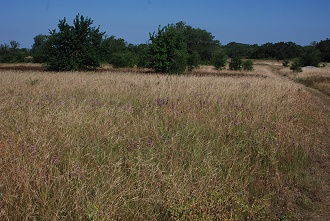
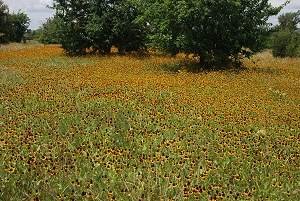
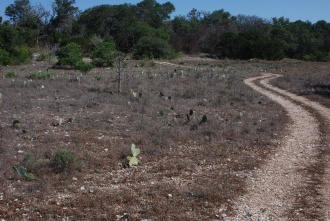
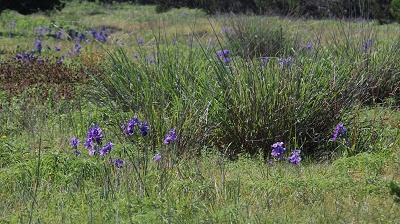
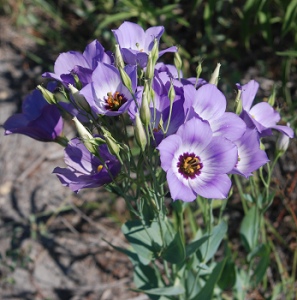
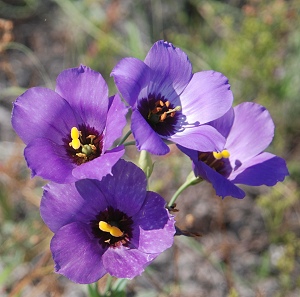
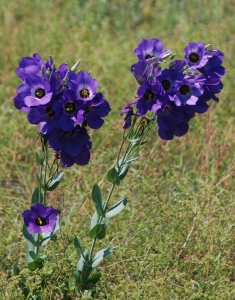
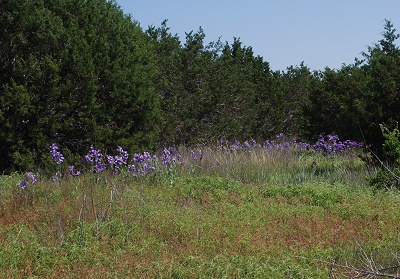
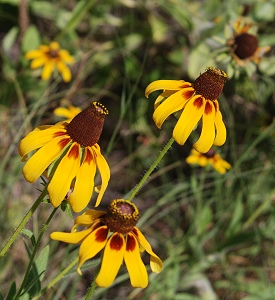
Comment by Martin LaBar — June 25, 2012 @ 7:50 pm
Once more, beauty triumphs!